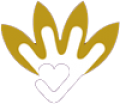Severs and Osgood Schlatter Disease – your osteopath can help.
We have been seeing a number of young people with Severs and Osgood Schlatter Disease in the clinic of late. It would be fair to say that neither of these conditions were particularly prevalent in the 80s and 90s, as after-school sport wasn’t really a thing. Kids got plenty of exercise getting to and from school as the majority of them cycled or walked, but organised sport is a lot more common in New Zealand today.
The demands of sport can be intense on growing bodies, and the higher your child rises through the ranks of their chosen activity, the greater their risk of a repetitive strain injury. Children who specialise in a single sport at elite level, especially one that involves a lot of jumping and running, are particularly susceptible. Most fitness professionals recommend that young people make the effort to participate in some kind of cross-training in order to utilise all of their muscles and keep their growing bodies in balance, rather than overloading particular joints and muscles when favouring one activity.
What causes Severs, and how do we make it go away?
During puberty, when children go through growth spurts, their muscles, bones, and tendons can grow at different rates. This can put strain on their growth plates, areas of rubbery cartilage at the ends of the long bones of children which will eventually harden into bone.
High impact activity, especially if it takes place on hard surfaces such as basketball courts, can cause a condition called Severs, where the growth plate in the back of the heel becomes inflamed, causing pain and swelling – this can be mild or quite debilitating.

The good news is that our osteopaths can work their magic even before the acute phase has passed, with gentle therapy to release tight muscles, especially the calves, and mobilise joints. You will also receive a comprehensive stretching plan to take home with you. As with any injury, while the pain of Severs disease is felt at the heel, the body mechanics that have caused the problem may go as high up as the pelvis or lower back, so it’s important that we do a full assessment in order to prevent the problem from recurring.
At home treatment involves cold therapy, over the counter anti-inflammatories, and stretching, but most importantly, REST. We know that this last piece of advice can be genuinely devastating for ambitious young sportspeople, but we do recommend that they reduce, if not stop the activity that caused the Severs to flare until all of the pain is gone, which can take up to 12 weeks in some cases. If the pain isn’t too severe, then we can manage the condition with taping, stretching and massage to allow them to continue competing, but we advise that they break up high impact training with a low impact activity such as cycling or swimming until the condition has eased.
Knee pain - not just an old person issue.
Osgood Schlatter Disease is another condition seen mainly in growing children who participate in high impact activities, but it affects the knee. Your child should be able to continue their sport while they receive treatment. This condition is caused by inflammation of the patellar tendon where it attaches to the shin bone, and often a lump can be felt underneath the kneecap which is painful to the touch.

The treatment protocol for Osgood Schlatter is similar to that of Severs i.e.. ice, rest, over the counter anti-inflammatories, stretching and massage. Unless the pain is severe it won’t be necessary to stop sport altogether. Once again, your osteopath will be effective in reducing the pain and the likelihood of recurrence by working to loosen the quadricep muscle and releasing the pressure on the kneecap.
If your child is experiencing heel or knee pain, or any discomfort that is affecting their ability to play sport, give our team a call or book an appointment online at Osteopath Bookings
If your child or teenager is super active it is definitely a good idea to book them in for a consultation before they suffer a repetitive strain injury. Your practitioner will perform a comprehensive assessment of their biomechanics and work on any muscle imbalances in order to nip issues in the bud before they become a real problem. As parents we all know that when it comes to sports injuries in the middle of an important season, prevention is a whole lot better than cure!
Back to blog
